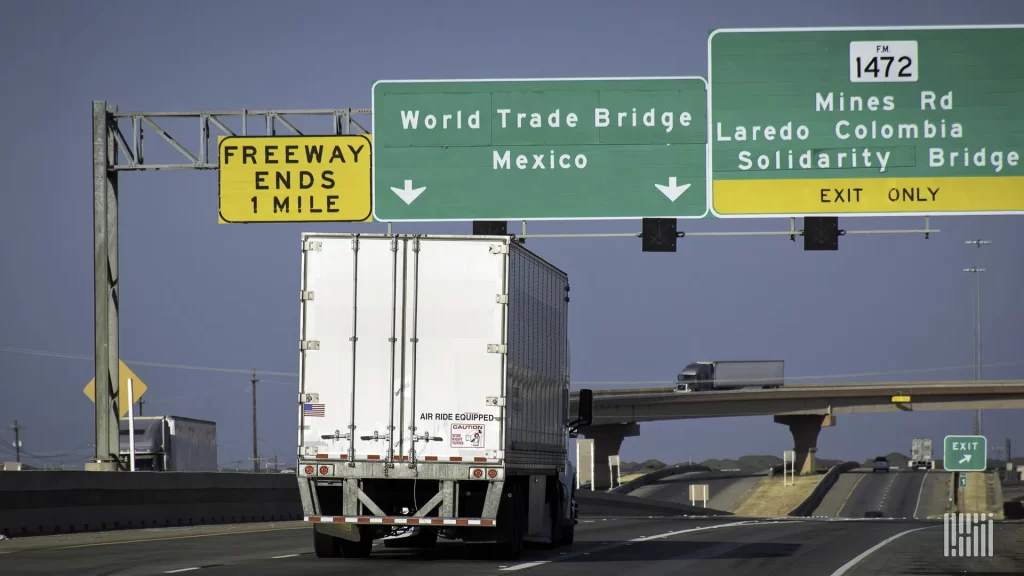March 28, 2022
Mexico increasingly attractive for US shippers, manufacturers

Rise of nearshoring, increased cross-border trade put spotlight on what Mexico has to offer
Economic growth in Mexico has caught the attention of many U.S. manufacturers and shippers looking to nearshore or take advantage of Mexico’s improving transportation networks and young, educated workforce. It seems that Mexico and the U.S. share more than just a border.
“A lot of companies that went to China, Thailand or Vietnam are considering bringing their investments back to North America,” said Kenneth Smith Ramos, a partner at Agon, a full-service antitrust and regulatory advisory firm in Mexico that helps international companies develop strategies to navigate the country’s regulatory and market complexities.
“Because of those different elements such as USMCA, lower labor costs and a skilled workforce, we’re seeing Mexico become a very attractive location for that investment.”
Ramos, who previously served as Mexico’s chief negotiator for the modernization of NAFTA that led to the signing of the United States-Mexico-Canada Agreement, discussed Mexico’s rising economic and trade status with Mark Vickers, Reliance Partners’ executive vice president of international logistics.
Agon and Reliance Partners together maintain pre-vetted relationships with 3PLs that operate free trade zones (FTZs) and bonded facilities at their warehouses. These groups are helping shippers bring products into Mexico by taking advantage of the tax deferrals that Mexican FTZs and bonded warehouses provide.
“It’s the right time, especially when companies throughout the world are really taking nearshoring seriously as companies are coming back home,” Ramos said when asked if shippers should consider venturing into Mexico.
China remains the leading trading partner of the U.S., but not by as large a margin as many assume. Mexico and Canada have joined China in a tight race for pole position. In fact, Mexico held the top ranking just last April.
It then fell to third place before surpassing Canada in January to become the United States’ second-largest trading partner, as trade with the U.S. rose 17% year-over-year to $56.9 billion. Comparatively, China’s trade with the U.S. jumped 14% in January to $59.2 billion; Canada stood at $56.8 billion.
“Mexico has a market of 127 million people. We’ve all been hit by the economic crisis, but as the U.S. economy begins to grow, so does the Mexican economy because we’re very much integrated,” Ramos said, adding that he expects the Mexican economy to grow 4% this year.
Mexico’s economy began to diversify after the passage of NAFTA in 1994, as Ramos noted the advanced manufacturing in sectors such as automotive and aerospace that have entered the country in recent years.
He said these developments have greatly improved the skill sets of Mexico’s younger workforce, pointing out that they cannot be categorized simply as cheap labor.
The influx of trade, foreign investment, and federal and state funding has kicked off a sort of a competition among the Mexican states. Ramos said that the central Mexican states are catching up with their northern neighbors with an uptick in advanced manufacturing. In fact, he described Guadalajara in the state of Jalisco as “Mexico’s Silicon Valley” for its burgeoning software technology sector.
Since NAFTA, significant highway and rail infrastructure projects have been underway throughout the country. And with USMCA, Mexico has even more plans in the works, as Ramos said the aim is to bolster its intermodal port and rail operations.
With the rise of nearshoring and increased cross-border trade, now is an optimal time to take advantage of what Mexico has to offer.
However, it’s best to enter the market with a trusted partner.
“It’s important to work with someone on the ground in Mexico that understands the rules at the federal and domestic level … to help coordinate all of the logistics, legal and regulatory considerations so that they can reduce costs without having to worry about learning how Mexico works,” Ramos said. “Working with a company such as Agon, in partnership with [Reliance Partners], we’re able to reduce costs to a level that makes investing in Mexico more profitable and more likely to succeed.”
Reliance Partners, a proud partner of Agon, not only specializes in North America in cross-border and international usage-based insurance but also provides international business consulting services.
To ensure all of their bases are covered, shippers should consider Reliance Partners’ All-Risk, Shipper’s Interest Cargo Insurance through its Borderless Coverage program. From the moment of pickup until final delivery, this coverage protects against cargo theft and damages for shipments regardless of mode.
Vickers said most shippers fail to realize that they’re not receiving cargo insurance in Mexico or erroneously assume that their U.S. cargo insurance extends into Mexico.
But with an All-Risk, Shipper’s Interest policy, coverage can be secured on a per-shipment or per-project basis for high-value Mexican and international shipments.
Freight brokers who have historically turned down freight moving into Mexico can now serve shippers confidently with this policy in place. A network of trusted Mexican-based carriers, along with good risk management processes, cargo insurance and world-class shipment visibility, is just what global shippers wary of entering the Mexican market want to hear.